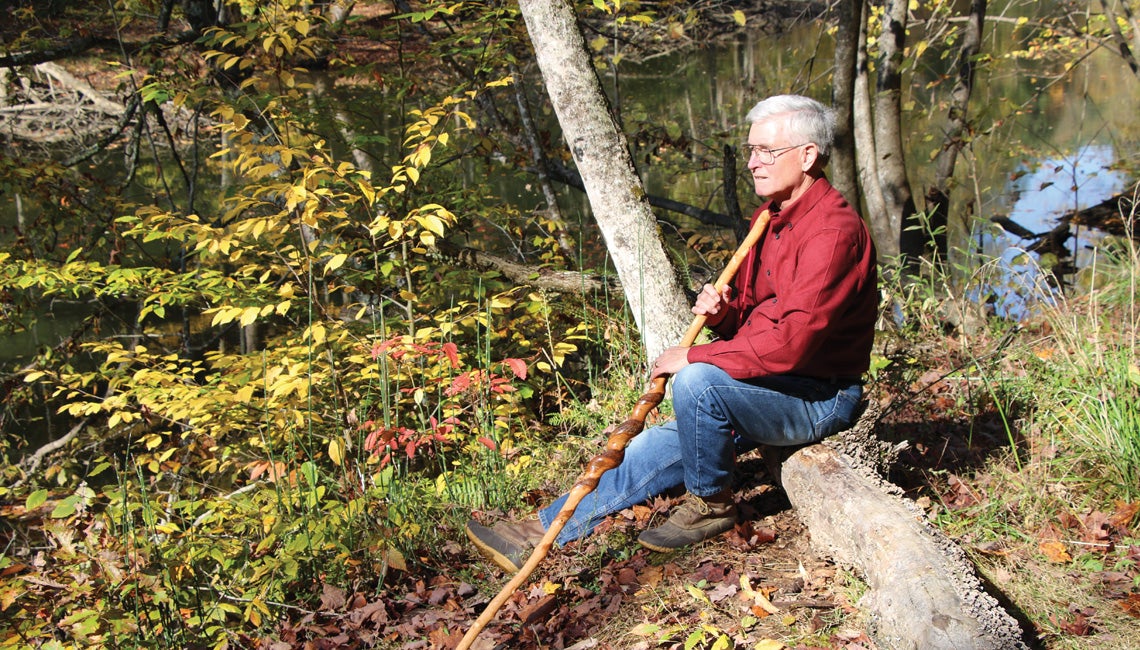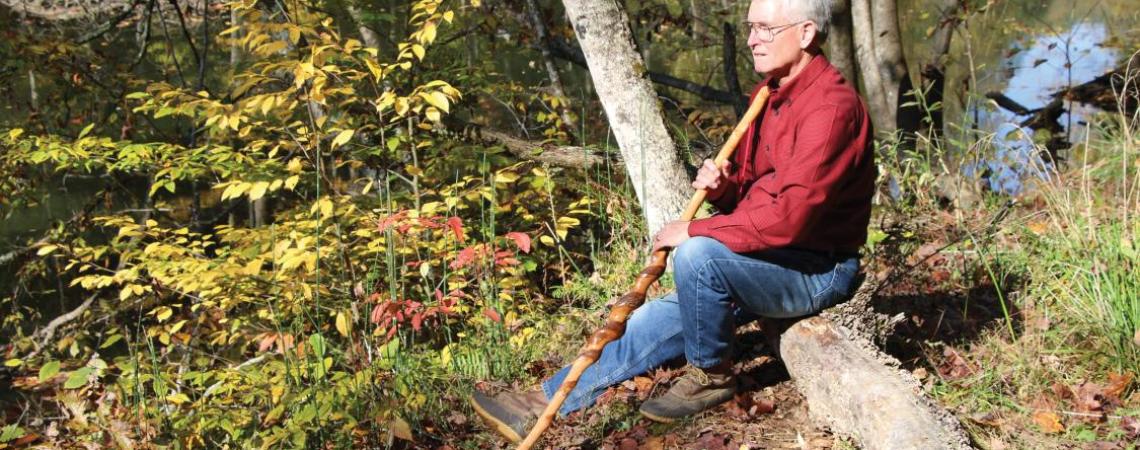Are your favorite hiking trails somehow growing inexplicably longer and steeper? If so, congratulations! You’re a “seasoned citizen.” For most outdoor folks, that hard-won status usually kicks in sometime around age 50.
The realization that I had qualified for the honored designation dawned on me a few years ago while hiking in the Hocking Hills in southeast Ohio. That region has some of the most beautiful trails in the Buckeye State, but also some of the most rugged. About halfway through my day I was wishing I had a hiking staff — especially when ascending or descending the steep, rocky, narrow footpaths.
Thus began my search for just the right sapling from which to make a staff. Sure, I could have purchased a pair of those lightweight, aluminum trekking poles, but that’s not what I had in mind. What I was looking for was a single small tree with a natural spiral — something unique, something with character.
Chip Gross searched for several months to find the perfect sapling with a natural spiral.
After a lengthy search spanning several months, I eventually found just the right tree — growing, of all places, on my own property 100 yards behind the house. About a dozen feet high, it was a thin sugar maple that had grown straight up for about 3 feet, spiraled for 2 feet, then grew straight again. Perfect!
What caused the spiraling? Chad Sanders, a forester friend of mine who works for the Ohio Division of Forestry at Mohican-Memorial State Forest near Loudonville, has a theory: “Probably an Oriental bittersweet vine or some other vine wrapped itself around the tree for a few years as it grew,” he says.
I’m not a woodworker, but fortunately I have a buddy who is a master at the craft. Gary Isbell, a member of Consolidated Cooperative, turns out gorgeous cabinets, tables, chairs, and other functional works of art from his basement workshop near Sunbury in central Ohio. I asked him if he could work his magic on my maple sapling and turn it into a hiking staff, and he was eager to take it on: “I thrive on trying new projects that I’ve never tackled before,” he told me.
As you can see by the accompanying photo, the hiking staff turned out great — a work of art that I will enjoy for the rest of my days. No doubt, it will be passed down to my kids and grandkids down the line. Weighing about 3 pounds, the staff measures just over 5 feet in length, is an inch-and-a-quarter in diameter at the top, and tapers to 1 inch in diameter near the bottom.
You don’t have to be a geezer like me to benefit from a hiking staff. In addition to helping you walk more steadily, a hiking stick has other uses. For instance, it can be used to move briars and other obstructions out of your path, and it will help you cross creeks or other wet areas more securely. Also, a hiking staff could potentially be used as a stout defensive weapon to fend off predators.










